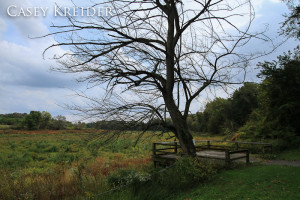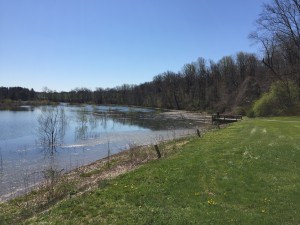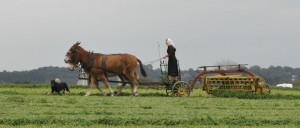Lititz, PA Coupled Human-Environment System
I think it is important to understand biodiversity and the coupled human-environment system that I live in. Therefore, my assignment to myself is to think about my hometown and analyze how biodiverse it is. What have the residents of Lititz, PA done to save our environment? How biodiverse is it for an environment located in the “temperate zone”?
In order to describe my hometown of Lititz’s biodiversity, I created a general diagram to show the interactions between humans and our environment (a “coupled human-environment system”). The community of Lititz, in comparison to a rainforest, is not very biodiverse. But Lititz in comparison to the many American communities is! Lititz has several diverse wildlife “sanctuaries” like the Wolf Sanctuary, Middle Creek Wildlife Refuge, and Amish farms. The Wolf Sanctuary is eighty plus acres of natural woodland home to the Speedwell Wolves. It has been the home to wolves for over 30 years and holds a unique position as “Ambassador” to the wild of Lititz, PA (“Ambassador” between wild animals and humans). The large woodland area allows for the wolves to have a safe home while giving the tourists of Lititz a view of their wildlife. Middle Creek Wildlife Refuge is another wildlife sanctuary located just up the road from Lititz that is home to many species of birds and serves as a stop-over to many birds that migrate up and down the eastern coast of the US. Amish farms located in Lancaster County operate with as much self-sufficiency as possible (ex: cow and wildlife wastes are literally sprayed on plowed fields as a fertilizer for crops and mules are used to plow and pull harvest wagons). The Amish live a minimalist life by using no electricity or cars and harvest and prepare their own food, create their own clothing, and recycle the wastes of their animals. The Amish are also important to the Lititz community because they have many roadside markets where the general public can purchase home-grown fruits and vegetables which lessens our “human footprint.” The Amish are very environmentally friendly people and typically live off many acres of farmland. A majority of Lancaster county is made up of this farmland.
I mentioned these parts of the Lititz environment because local residents and lawmakers have worked hard to preserve the Lititz community (local and state levels). Also,we are blessed in that we have experienced only a very few extreme weather conditions. Hurricane Sandy caused some flooding in Lititz, but nothing that was not easily repairable. Early spring frosts can cause a year of low fruit yield (apples, stone fruits, grapes), but that, too, is only a temporary loss. As was stated in module 10, areas where few natural disasters occur have a greater biodiversity. I believe that is true of Lititz and the surrounding Lancaster County.









Hello, my name is Gilberto Aponte and here’s a link to my post: http://sites.psu.edu/geog30/2016/04/15/module-10-gilberto-aponte/
I really found your hometown to be quite interesting having the wolf sanctuary and the Amish communities around. I’m from Puerto Rico, so those two things sound so outside of what I’m used to that I had to comment. It is great that the state and local government have taken good efforts in preserving biodiversity in your community. Also really appreciate your inclusion of pictures! Might do that for mine too now that you gave me the idea.
Hi, my name is Jiye Choi. i’m junior studying energy engineering.
It was interesting to read your post.
Today, many human actions affect to biodiveristy negatively. But I think amish minimize the affect to the biodiversity. It was impress that there is Wolf Sanctuary. It was nice you to have a pictures! http://geog030.dutton.psu.edu/2016/04/15/learning-activity-10-jiye-choi/ here is my post if you want to check out